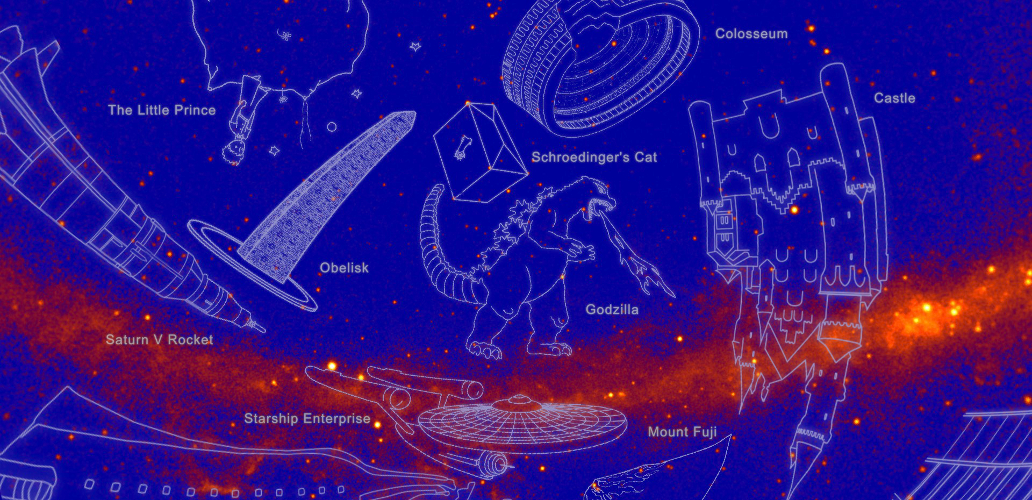
 Credit: NASA
Credit: NASA
Bounding the Gamma-Ray Sky
Since ancient times, regions in the sky containing distinctive arrangements of stars have been split into constellations.
Constellations have been usually named for some person or creature from
contemporary cultural myths (many from the ancient Greeks), or other items that sparked the popular fancy.
Constellation boundaries have changed over the centuries, and their names as
well. The modern set of 88 contiguous constellations was formally standardized by the
International Astronomical Union in 1928. This set includes such
recognizable constellations as the constellation of Orion, the Hunter, Ursa Major, the
Great Bear (which contains the Big Dipper, one of the most recognizable asterisms in the northern
sky), the constellations of the Zodiac (through which
the Sun journeys throughout the year), along with some more modern constellations
like Microscopium,
the Microscope, Lacertae,
the Lizard, and Fornax,
the Furnace. With good reason, the modern set of constellations are based on
the distribution of visible stars. What would the constellations look like if,
instead of viewing the visible-band radiation from the cosmos, we instead could
detect high energy Gamma-ray emission? Thanks to the all-sky Gamma-ray maps
produced by the Fermi Gamma-ray Space
Telescope during its more-than-a-decade of operation, we can answer this question. Fermi
has now detected more than 3,000 discrete sources of Gamma-ray emission, many of
which are supermassive black holes in galaxies far beyond the Milky Way rather than stars within our Galaxy. The number of Gamma-ray sources detected by Fermi
is now comparable to the number of visible stars which define the modern set of
constellations. The Fermi project has now organized these sources into an unofficial map of Gamma-ray
constellations. The
whimsical Fermi constellations draw heavily from contemporary culture, and each
has relevance to Gamma-ray radiation, or has some connection to the Fermi
project itself. The image above shows a region of the sky highlighted by the
constellation of Godzilla,
the King of Monsters, the box marking the constellation of Schrödinger's
Cat, the Obelisk, the Colloseum,
and unique in all the sky, the constellation of the Little Prince. Explore the sky in
Gamma-rays for yourself. It remains to be seen if these new Gamma-ray
constellations will be used by astrologers to determine your high-energy
horoscope.
Published: October 22, 2018
<
HEA Dictionary ● Archive
● Search HEAPOW
● Other Languages
● HEAPOW on Facebook
● Download all Images
● Education ● HEAD
>

Each week the HEASARC
brings you new, exciting and beautiful images from X-ray and Gamma ray
astronomy. Check back each week and be sure to check out the HEAPOW archive!
Page Author: Dr. Michael F. Corcoran
Last modified Monday, 26-Feb-2024 17:03:25 EST


